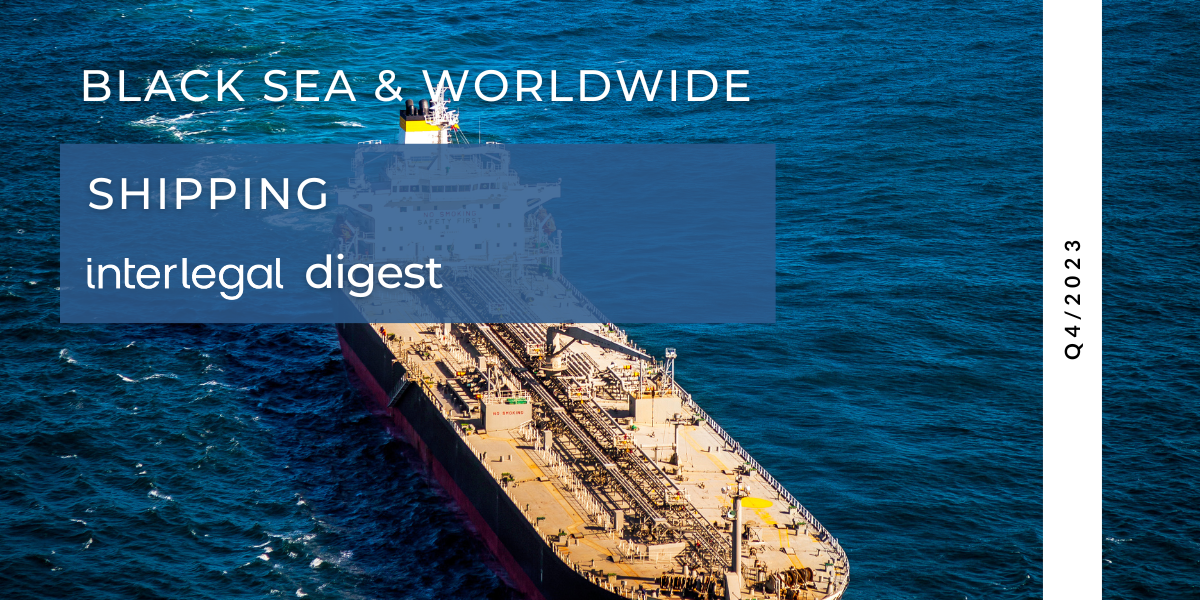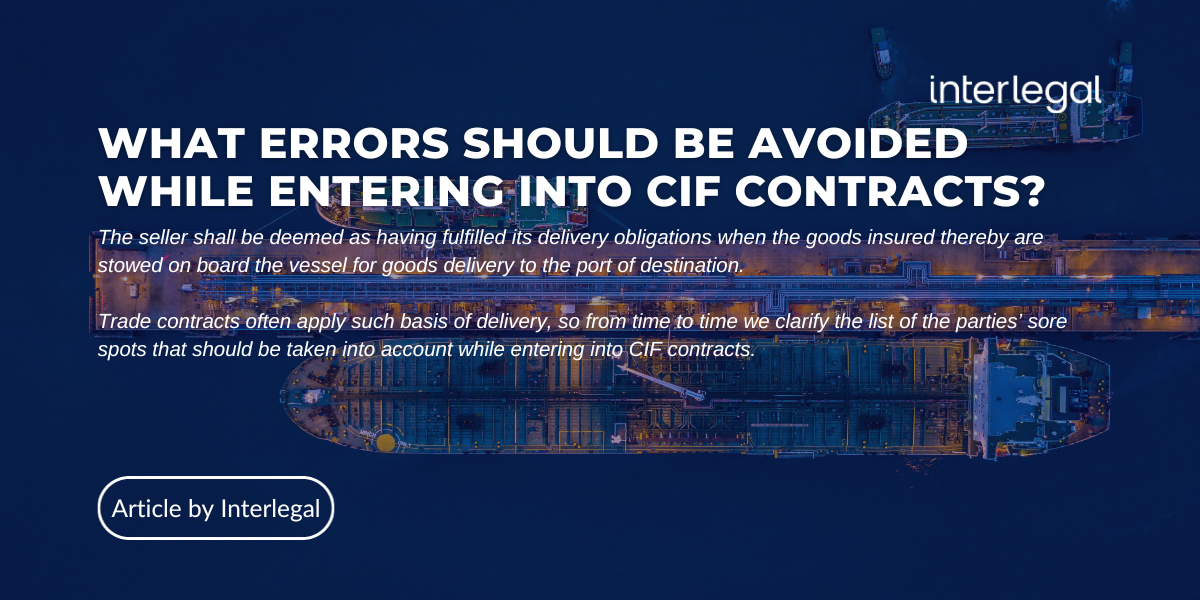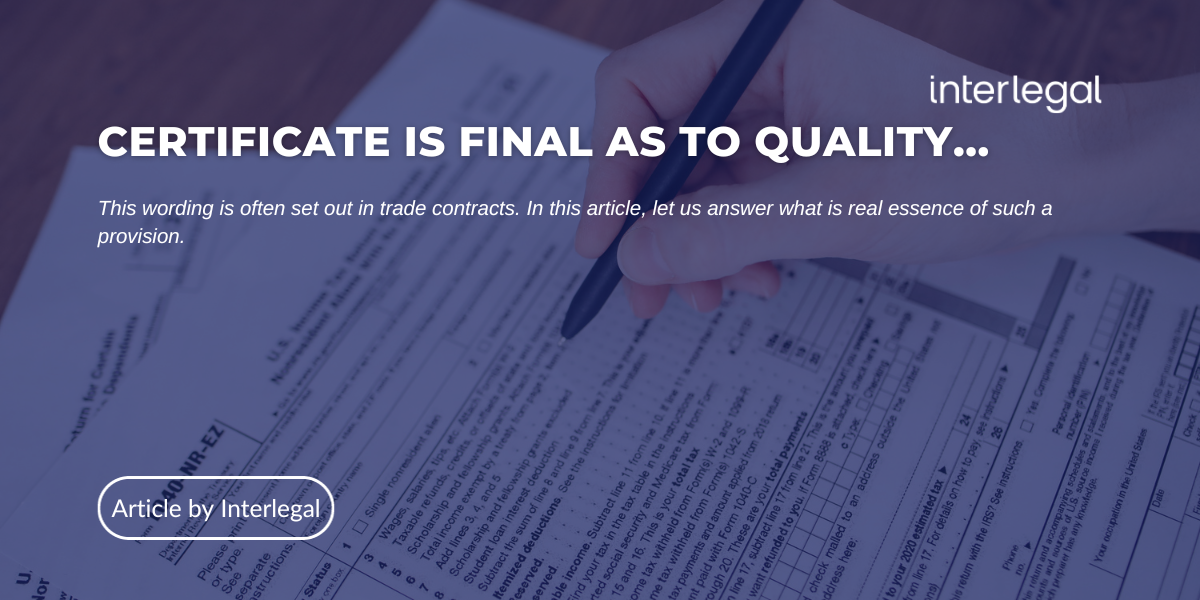Legal and commercial aspects of ship repair activity
26 September, 2016
6
Despite certain difficulties for the last decades, Ukraine still has a powerful ship repair basis and renders quite many ship repair services. Here many commercial disputes arise, causing financial and legal problems for the parties. These disputes usually concern the conflicts with contractors (ship repair yards) and customers (shipowners). Such conflicts often arise from simplified understanding by the parties some aspects of ship repair relationship. It is obvious, if at the stage of negotiations the parties discuss the whole range of terms for their further relationship and its performance procedure, as well as fixed their arrangements in the contract, many problems will be avoided.
Baltic and International Maritime Council (BIMCO), the most reputed non-governmental organization of shipowners and maritime brokers, has drafted and recommended two contract proformas for common use: Standard Ship Repair Contract (REPAIRCON) and Standard Minor Repair Work Contract (MINREPCON). Like other contract proformas recommended or drafted by BIMCO, these proformas are non-regulatory and serve as sound grounds for the further contract – only as grounds and nothing else. Individually drafted contract requires for essential additions and modifications for each certain case. In most cases ship repair enterprises draft their own standard forms and propose them to customers-shipowners for signing.
Fixing negotiations
So, time for ship repair is close. Shipowner or its authorized representative starts looking for ship repair base, jointly with drafting the preliminary repair record and filing request to ship repair enterprises. Having analyzed replies from potential contractors, the Shipowner makes its choice and joins preliminary negotiations.
We recommend to fix the results of such negotiations in the Letter of Understanding. It is not a declarative document with uncertain content, but a protocol of the held negotiations fixing their result. It is reasonable to state in the Letter of Understanding at least:
– The parties to the further contract and the concerned vessel;
– Supposed date of ship repair commencement, its duration and cost;
– A set of documents to be submitted by the Customer to the Contractor in order to sign the contract.
The latter item is the most essential, since it is very important for the Contractor to check status of the company – a party to the further Contract, to check the vessel status, to find out the vessel main specification, to determine correlation between the contractual party and the shipowner (if they differ) and to determine the payer and the responsible person. Today, when shipowners are mostly offshore companies, the vessel itself may serve as the only guarantee of the Shipowner’s obligation fulfillment.
Ship Repair Contract: structure and main sections
You should not fear to draft a large contract: it is better when the parties’ actions and their effects are more detailed, but without awkward formulations. The contract shall state the achieved arrangements fully and precisely, without anything “interlined” or “presumed” with displaying the opposite.
The contract preamble shall state full and precise names of the parties, their jurisdictions and powers of the persons acting on their behalf.
In the first section we recommend to fix interpretation of terms and concepts used in the contract. Accuracy of the contract performance depends mainly on their certain definition and unanimous understanding. There may be discrepancies even upon the simplest provisions (at first sight); even the concept of repair may have different interpretations.
In the second section it is reasonable to state procedure of work performance, their duration, regulatory and technical governing their performance, the issues of supply and use of materials and spare parts, involvement of subcontractors. The possibility or procedure of certain work performance by the Shipowner, jointly with its right to control work performance by the Contractor itself may be set forth either in detached or in the same section. One more essential term concerns engagement of classification society in monitoring repair works and the procedure of testing and submitting the repaired units to classification society.
Procedure of vessel acceptance in repair by the Contractor from the Shipowner and vessel return by the Contractor to the Shipowner, jointly with stating the relevant draft documents shall be described in details. It is also reasonable to provide the opportunity to cancel the contract by each party just before vessel acceptance in repair. Procedure of clarifying nature and scope of works and drafting intermediary repair records shall be also set forth in details.
The next section concerns financial terms. First, the contract price and total cost should be stated therein, namely: procedure of fixing initial and final repair cost, its arrangement and modification. Payment procedure shall be set forth in details: how much, when and at whose expense. Ship repair contracts usually contain a certain payment schedule, e.g. 60% from the initial repair cost as advance payment and full settlement upon work completion. One of the most frequent disputes concern changes in repair cost (due to changes in scope of required works, material cost etc.).
The next section shall stipulate mutual responsibility of the parties: for property loss or damage, for death or injuries of crew members, including contractual limitation of liability, reimbursement and possible responsibility against third persons. It is reasonable to include in this section force majeure clause. Responsibility of the parties for fire safety should be set forth in a separate section.
Further, the following shall be prescribed by the contract:
– the Contractor’s guarantees on performed works, work quality assessment criteria, procedure of detecting and eliminating defects within the guarantee period;
– possibility, procedure and effects of the contract cancellation (after commencement but before completion of works);
– risk insurance;
– procedure of dispute settlement between the parties, including the applicable law and jurisdiction, venue of dispute consideration and court compound, language and procedure of the court proceedings, procedure of enforcement and appeal against judicial/arbitration awards.
This article contains general specifications of the Ship Repair Contract. Under-estimation of the legal assistance importance at the stage of contract conclusion may result in unforeseen disputes which might have been avoided in case of the parties’ due diligence in the process of contract conclusion.
Published in “Ports of Ukraine” journal
























































